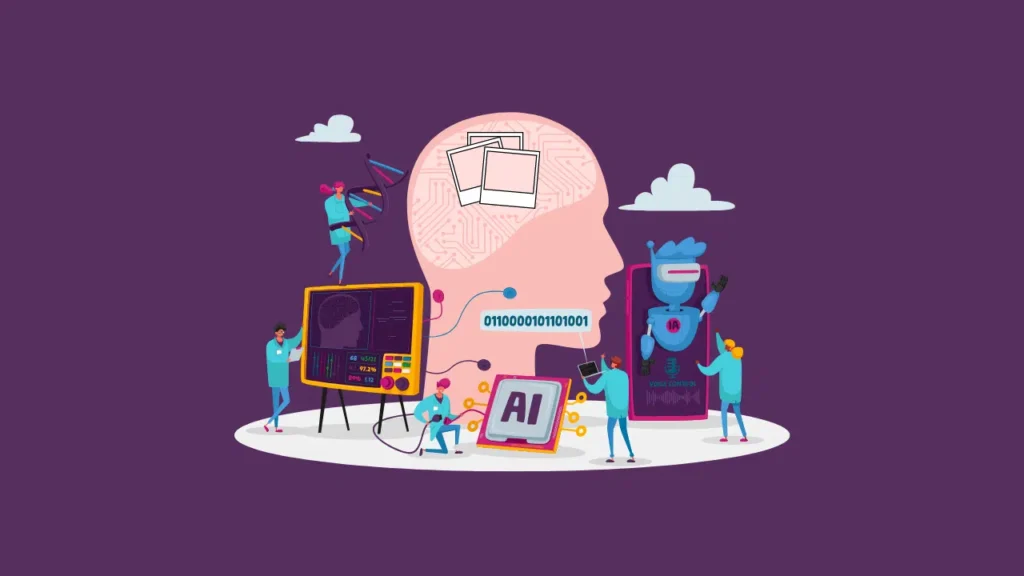In this digital age, there are numerous ways to generate wealth, and one of the most promising opportunities lies in artificial intelligence (AI). With rapid advancements in technology and growing demand, making money using AI has become increasingly viable. This blog post will shed light on how to unlock wealth by creating and selling AI models.
Understanding AI and Its Economic Value

AI, or Artificial Intelligence, mirrors human cognitive functions through machine processes. Such functions include the capability to learn, to reason, to solve problems, to perceive and to comprehend language. AI’s value lies in its capacity to sift through immense volumes of data, forecast outcomes, and streamline decision-making processes, which enhances efficiency and precision. AI applications span a wide range of sectors, including but not limited to healthcare, finance, education, and marketing. The broad use indicates a vast potential market for selling AI models. AI’s ability to manage large-scale data and predict patterns can be harnessed to create economic value. In essence, the value of AI models is directly proportional to their ability to solve complex issues across various fields. Therefore, an understanding of AI’s economic worth is crucial when venturing into making money using AI. The lucrative potential in this realm is undeniably vast and continually expanding, with AI models becoming a key driving force in many industries.
Steps to Building a Profitable AI Model
The journey to a profitable AI model begins with identifying a relevant problem that your model can solve. The process then moves onto data acquisition and pre-processing, which involves collecting and cleaning pertinent data. Following this is model architecture design and implementation, where you define the structure of your model and utilize programming languages such as Python or R to bring it to life.
The model then needs to be trained using your pre-processed data. This is a crucial step where the model learns to make predictions or decisions by identifying patterns in the data. This learning phase is then followed by model testing and validation, to check the accuracy and reliability of its outputs. The final stage involves refining your model based on test results to optimize its performance.
A deep grasp of machine learning principles, data science techniques, and programming skills are key to effectively navigate this process. You’ll also need access to a relevant, high-quality dataset. Patience, innovative thinking, and problem-solving prowess are essential, given that building an AI model often involves a considerable amount of trial and error.
Creating a profitable AI model isn’t just about developing a functional product; it’s about creating a solution that brings tangible value in addressing complex issues across different fields. A clear understanding of your target market and the specific problem you’re addressing can make the difference between a successful AI model and one that gets lost in the crowd. So choose your problem wisely, harness your skills effectively, and keep refining until your model becomes the solution it was envisioned to be.
Selecting the Right Market for Your AI Model

Identifying the appropriate market for your AI model is a pivotal step in monetizing AI technology. It’s essential to target markets where there’s a high demand for AI solutions, but also where your expertise and passion lie. Industries that regularly process vast amounts of data are often the most fertile ground for AI integration. Such sectors might encompass financial services, healthcare, logistics, or e-commerce, to name a few. It’s important to note that the worth of your AI model is boosted by its capacity to address and solve intricate issues within these sectors. Therefore, you should not only be aware of the existing demand but also understand the specific problems faced by these industries. By aligning your AI model with these specific needs, you position it in a market where its potential to create real-world impact is maximized.
Pricing Your AI Model
Setting the right price tag on your AI model can be a daunting task, primarily due to the novelty of the market. To effectively price your AI model, various factors need careful evaluation. These include the time invested in the development of the model, the complexity of its architecture, any costs related to the acquisition of necessary data, and the potential for providing substantial return on investment to prospective buyers. It’s also helpful to review pricing strategies for similar AI models in the market to gain insights into what consumers might be willing to pay.
The pricing model for your AI solution could follow several formats. A one-time purchase model charges the customer a single, upfront fee for permanent access to the model. Alternatively, you might consider a subscription-based model where customers pay a recurring fee, providing ongoing revenue. A usage-based model, on the other hand, charges customers based on how much they use the AI model, which can be appealing for companies with fluctuating needs.
Marketing and Selling Your AI Model

Promoting and monetizing your AI model necessitates a robust strategy to accentuate its value proposition to potential clients. It’s important to highlight how your model offers a superior solution to existing alternatives. Develop a persuasive narrative, and use real-world examples or demonstrations to illustrate its proficiency. The effectiveness of your model’s marketing and sales largely depends on the channels you use to reach your target audience. Networking at industry-specific gatherings, both online and in person, can be beneficial. Similarly, content marketing, social media promotion, and targeted email campaigns can be invaluable tools for reaching potential customers. An innovative and thoughtful marketing approach can attract a broader audience, increase model visibility, and ultimately drive sales.
Legal and Ethical Considerations
As you venture into monetizing AI technology, it’s crucial to remember that there are certain legal and ethical guidelines to abide by. These guidelines encompass data privacy laws which must be adhered to, ensuring that personal and sensitive information is appropriately protected and used in a lawful manner. Additionally, it’s imperative to prioritize fairness in your AI model, avoiding biases that could skew outcomes or lead to discriminatory practices. Transparency, too, plays a vital role. It’s important to design your model in a way that users can understand how decisions are made, thereby building trust and credibility. Furthermore, the potential social implications of your AI model should not be underestimated. Consider how your model might impact society, either positively or negatively, and strive to minimize any harmful effects. Operating within legal and ethical boundaries doesn’t merely prevent potential legal complications, it also fosters trust between your company, its customers, and the general public. By respecting these guidelines, you’re laying a strong foundation for a responsible and successful venture into selling AI models.
